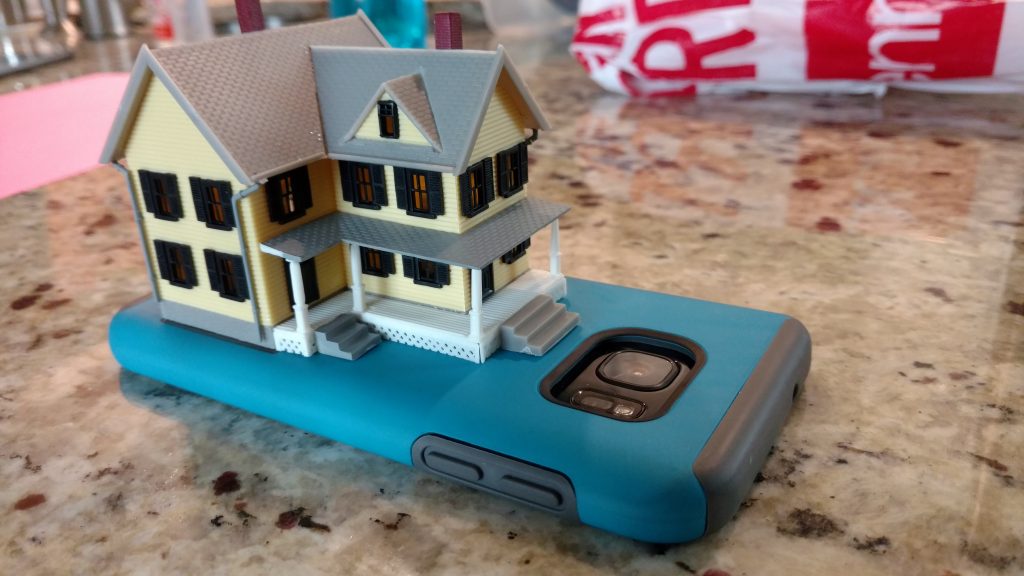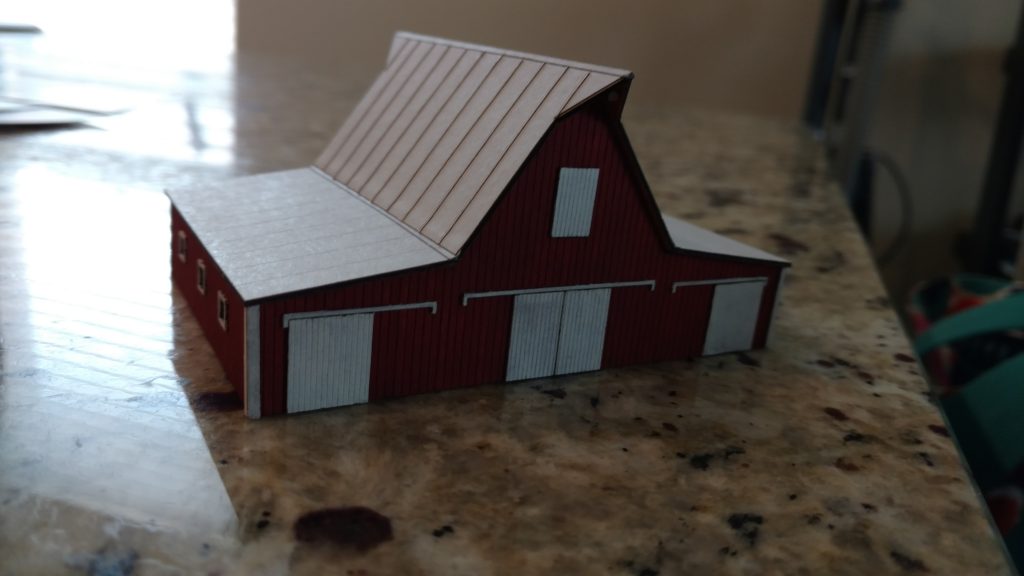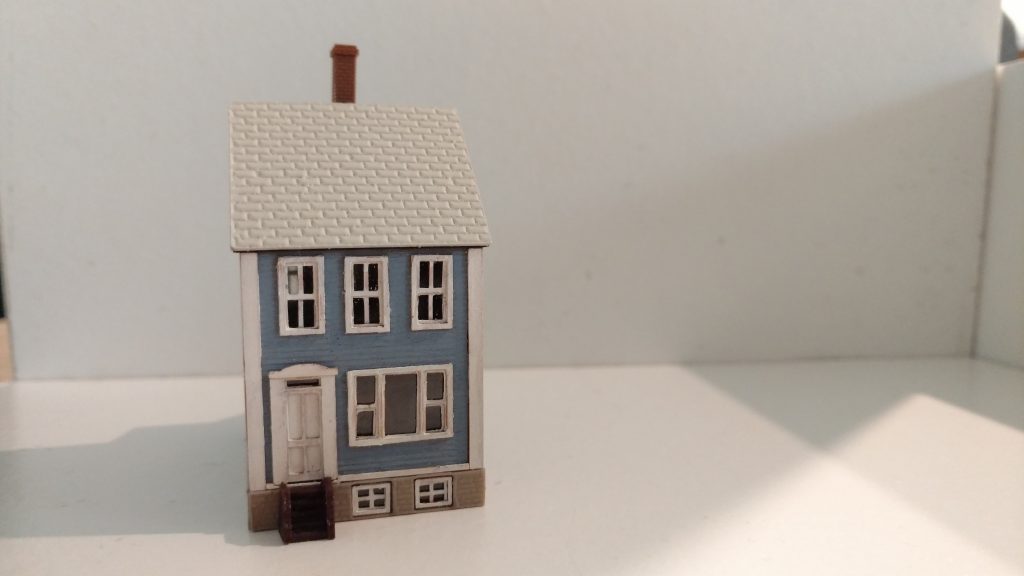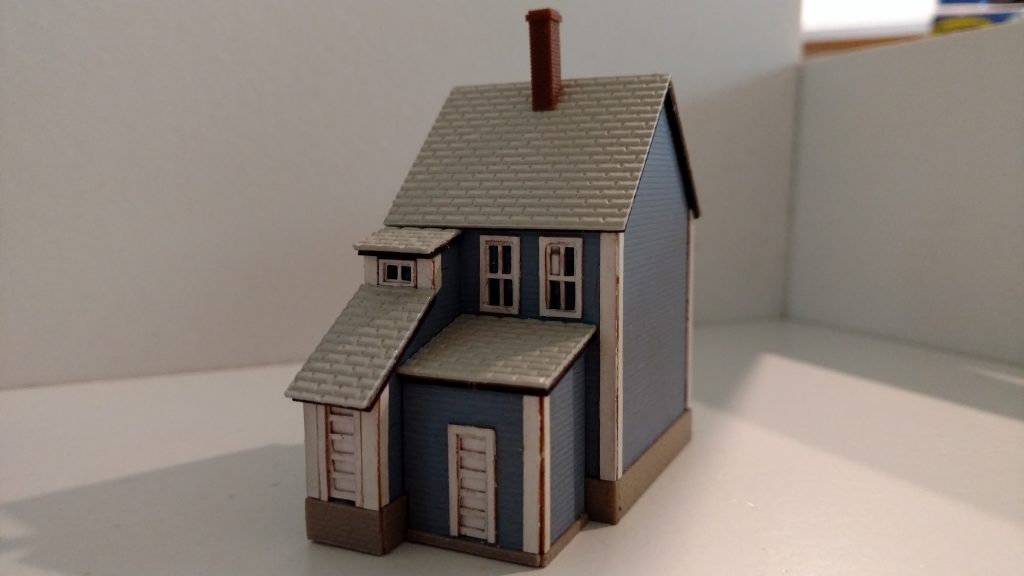And the Tale of the Second Railroad Begins
Genesis
The concept of T-Trak modules was further reinforced when my daughter and son-in-law offered me a small storage room for use as a train room in the home they share with us when we head south for the winter. They built a home with an “in-law” apartment in anticipation of our post retirement years and invited us to stay with them each winter. So, we’ve become “snowbirds”, Michigan residents with a winter home in Texas.
Our grandkids and I assembled some T-Trak module kits and snapped together a tabletop two-track oval with double crossover that we had running during our first winter in Texas and my recovery from heart surgery.
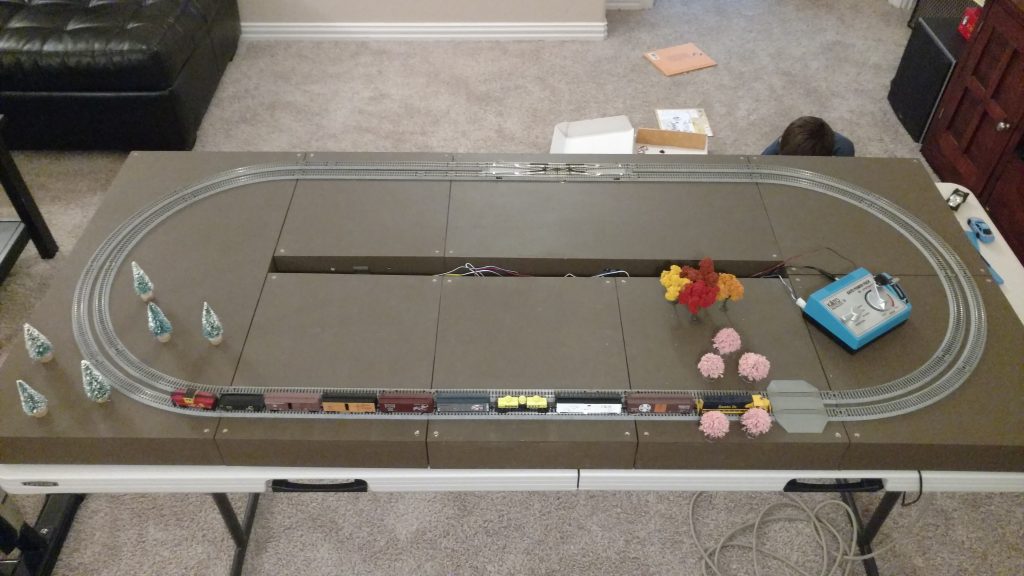
During the second winter I began building structures for that layout and other planned modules, and I developed an expanding plan for the Texas train room. (Definitely room for improvement in my modeling skills!)
The third winter we finished off the train room, mounted some shelf brackets and benchwork on the walls, added some modules and a loop, acquired a Digitrax Zephyr system, and began running two trains at a time on the extended layout. Still no scenery to speak of, but we’re now running trains on the BNSF Hollister Subdivision! Hmm, this start small and add on concept was really working!
Here’s a peek at the BNSF Hollister Subdivision:
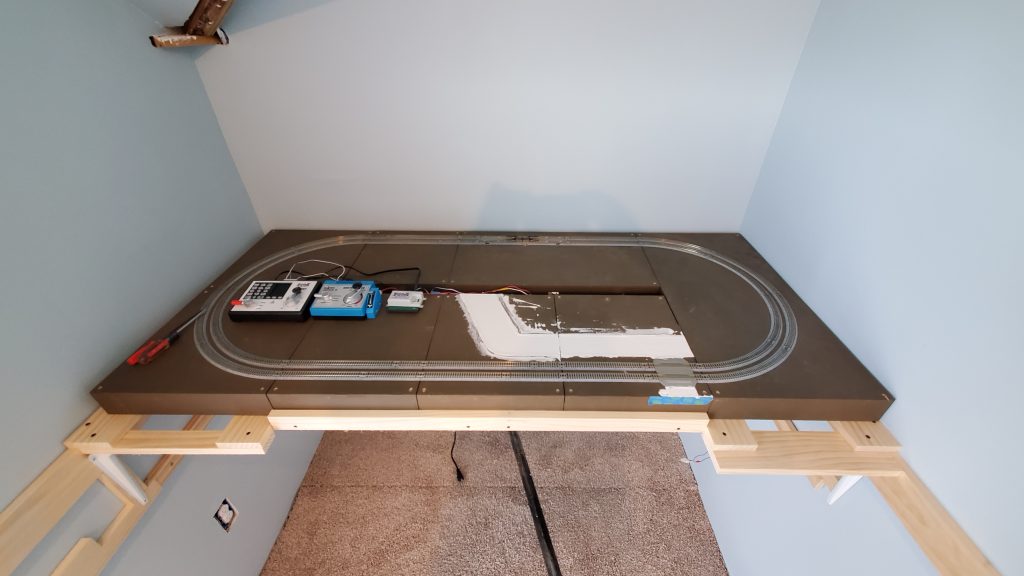
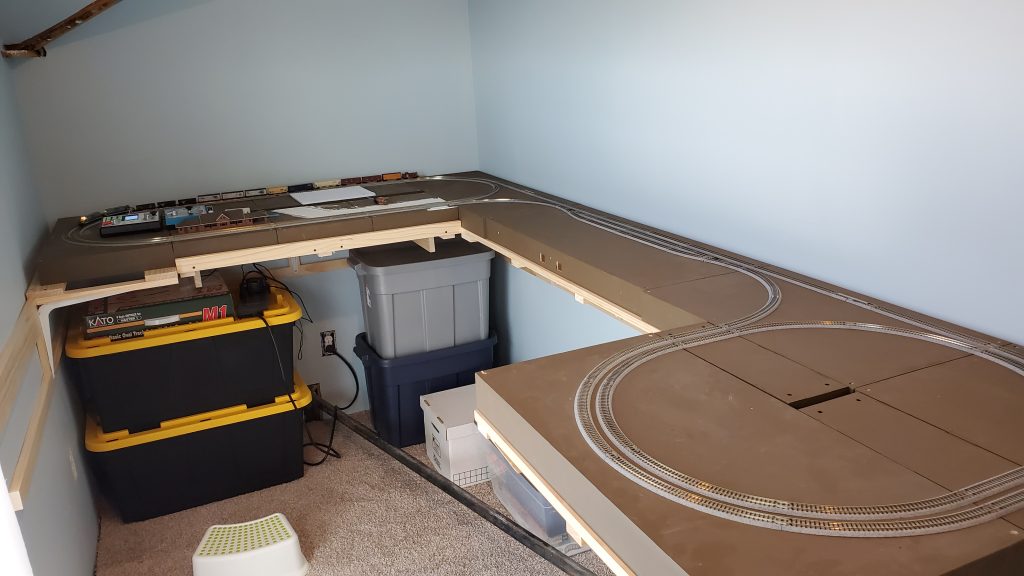
In the process of building this second layout I didn’t lose sight of my recommended approach for starting a railroad: plan your work! I developed a concept for the layout and designed a plan that allowed for growth with an ultimate layout configuration in mind.
Concept
Since my primary layout in Michigan addressed many of my desires for an earlier era, the steam to diesel transition era, I wanted this layout to represent a modern era, post-1970s, and a different region of the country. I also wanted to slip in a nod to my grandson’s familiarity with the CSX, developed during the brief time his family lived in Alabama.
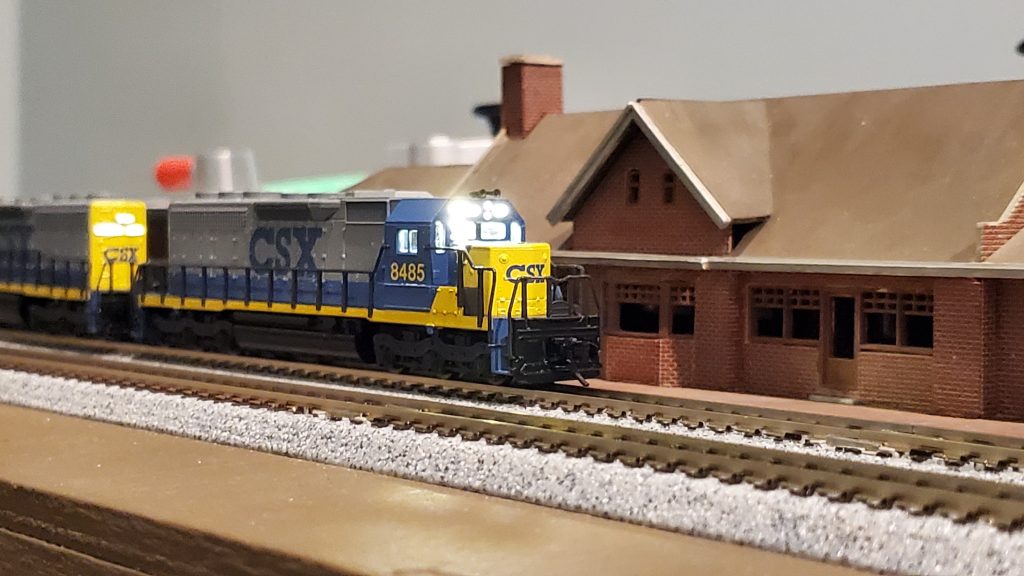
The CSX ran south of Birmingham about two miles from their home and he saw CSX trains nearly every day. At preschool age, those images heavily impacted his interest in railroads, and I wanted to give him a connection to those memories, so this layout and my home layout would need to run CSX trains. However, he has a growing interest in BNSF, as do I, and the BNSF is very visible in north Texas.
So this layout became a freelanced BNSF subdivision named Hollister for our Texas locale, connecting via east and west staging with a BNSF mainline, and including a short branch line serving a farming and ranching community. The mainline provides continuous running opportunities for long freights and passenger trains, with an engine servicing facility at Hollister, as well as switching opportunities on the branch line.
I also wanted to experiment with elevation changes on T-Trak modules, so I presumed a dense downtown area in Hollister requiring an elevated railroad and designed the branch line to climb from Hollister yard through the city and into the hill country before passing through New Hope and reaching Sweetwater Ranch.
Planning
Meanwhile, planning continues on the master design for the BNSF Hollister Sub. This second layout has given me opportunities to experiment with track planning for confined spaces using T-Trak modules, and experience in assembling the module kits. The design is a progression of several increasingly complicated arrangements of T-Trak modules with benchwork designed to expand as needed for support. The next two images are plans to represent the two configuration photos above.
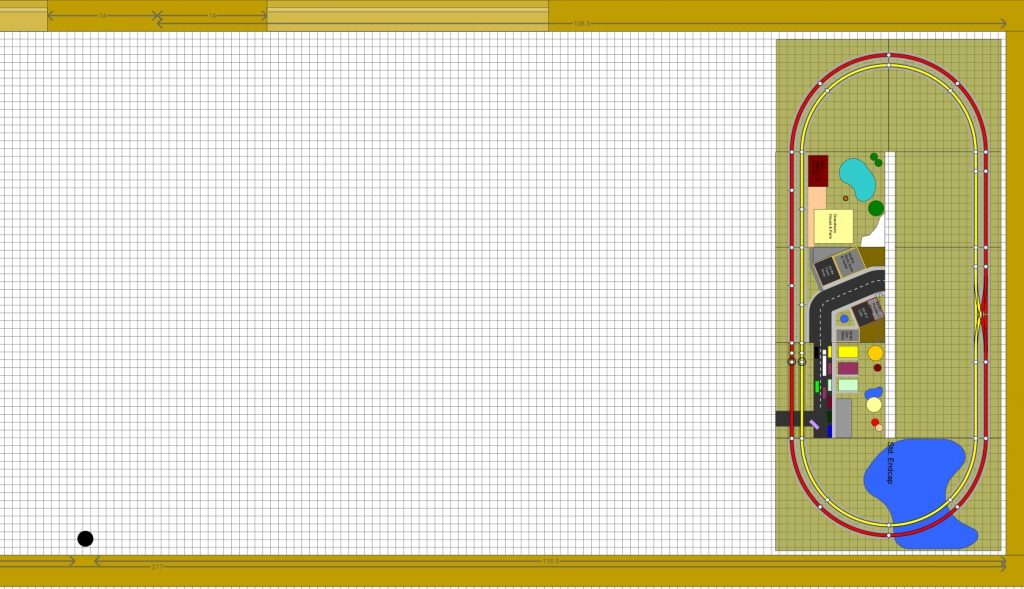
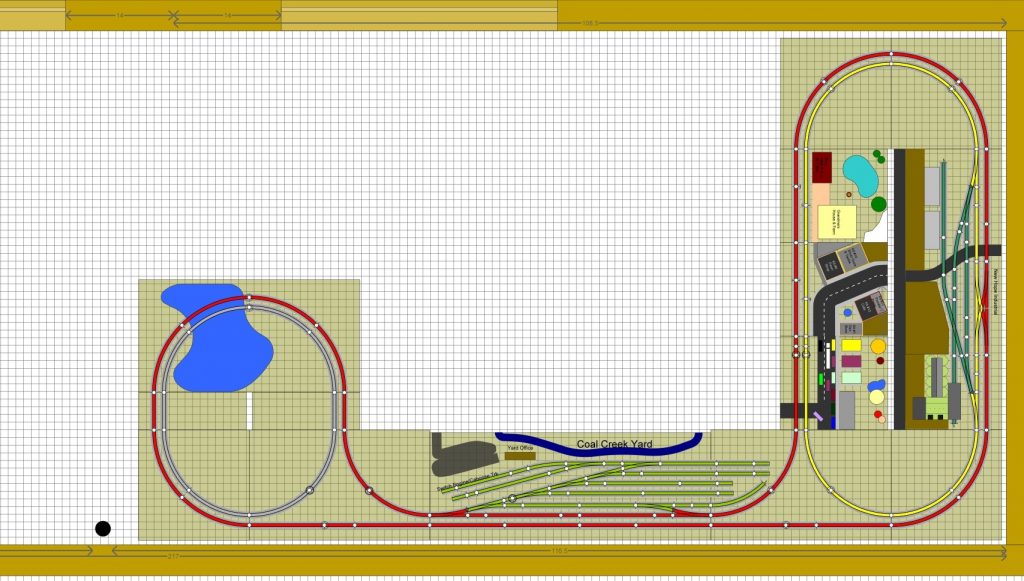
There are four other phases in the gradual expansion of the BNSF Hollister Sub, each requiring up to three additional modules and reusing existing modules to the extent possible. The following image is the final configuration designed for the space and includes many special modules which, while they will plug into a standard T-Trak layout, will leave the non-standard tracks unconnected for display purposes.
The plan includes three triple wide modules forming Hollister yard, which can be removed and used as an inline outer main staging yard for our local club’s T-Trak display layout. It also includes a major locomotive servicing facility which when combined with the yard modules can serve as the end of a T-Trak linear layout.
It does a good job of demonstrating just how complex a layout can be when designed with special and standard T-Trak modules.
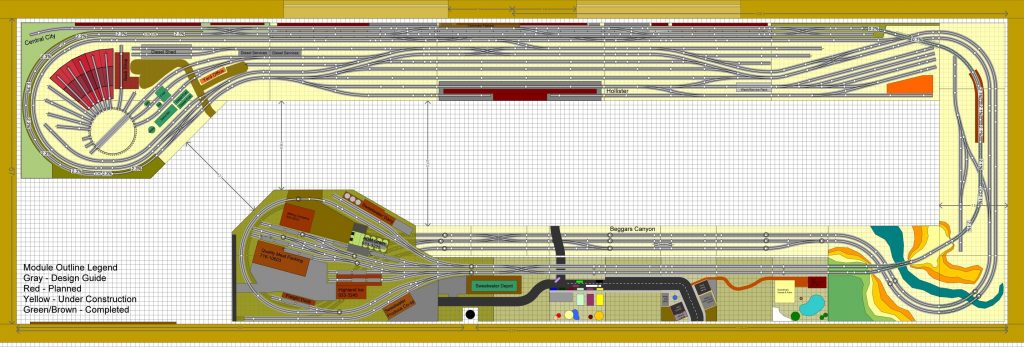
As you can see, a lot of thought has gone into what appears to be a fairly simple layout. That thought produced a layout that can be built quickly, expanded as desired, and operated in a way that is satisfying both to me and my grandchildren. It’ll keep model railroading fun!
Updates
You’ll find periodic updates and photos on my BNSF Hollister Subdivision right here. Feel free to ask questions and comment as the posts appear. Thanks for reading.

